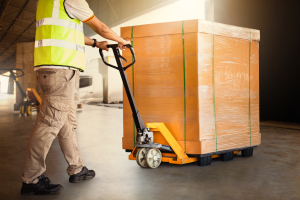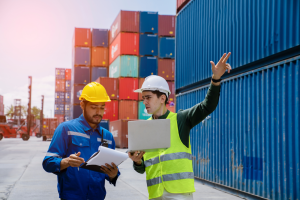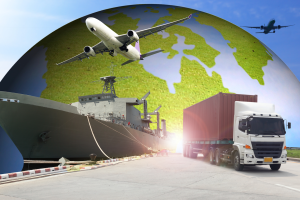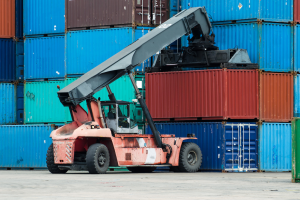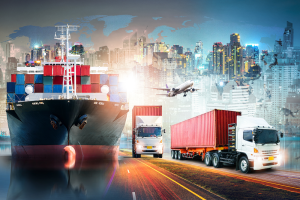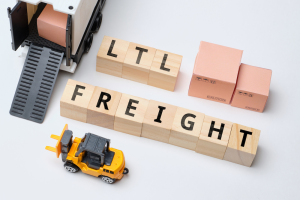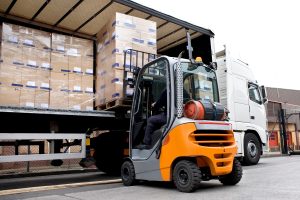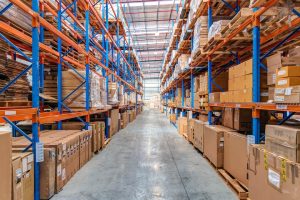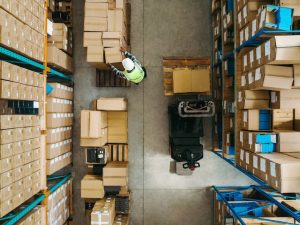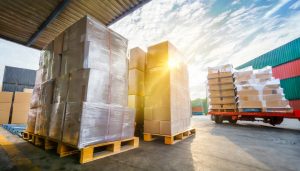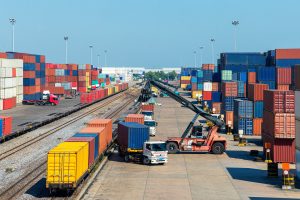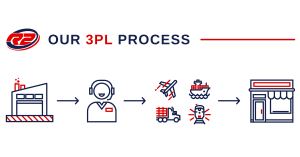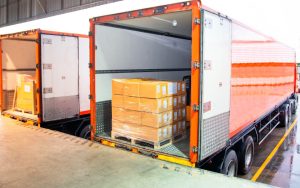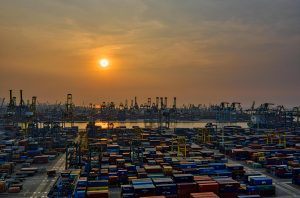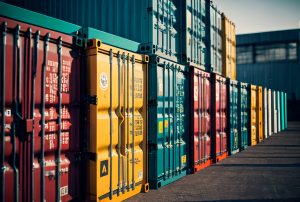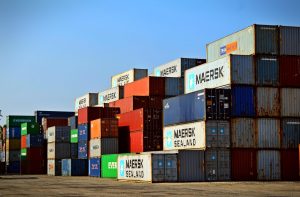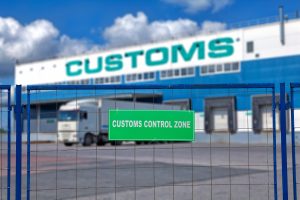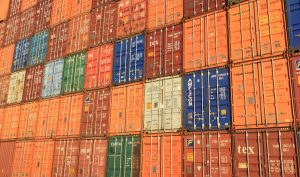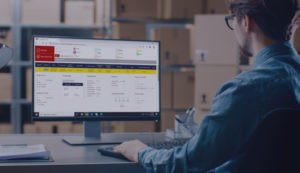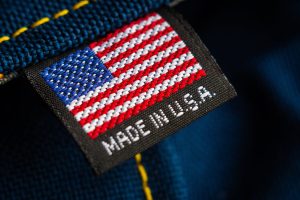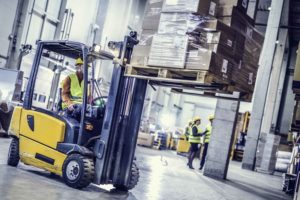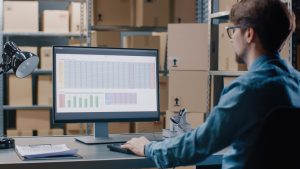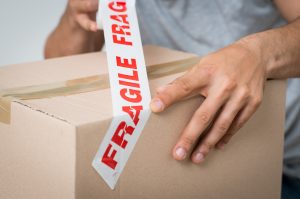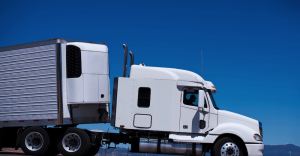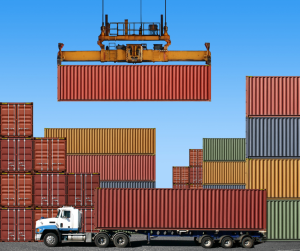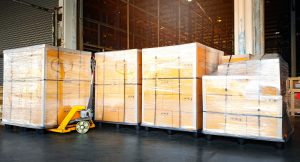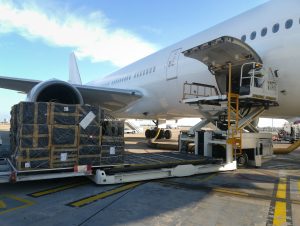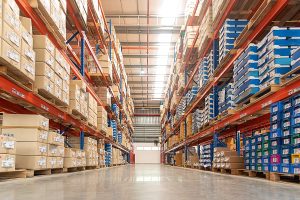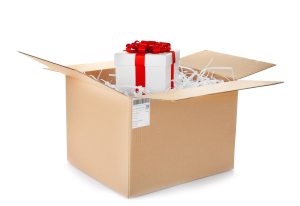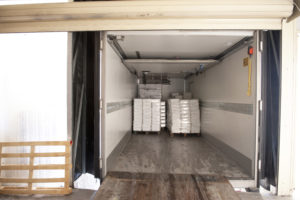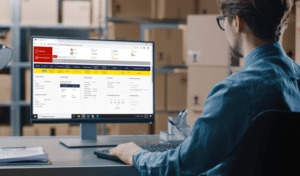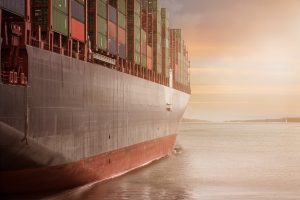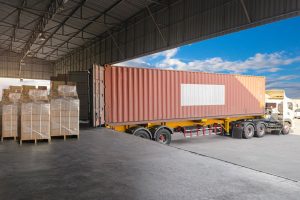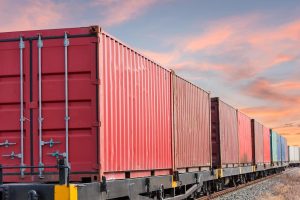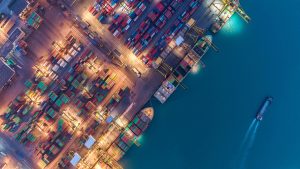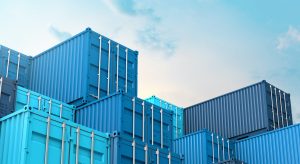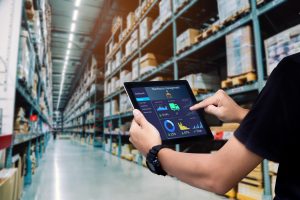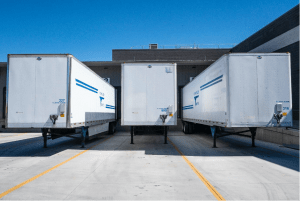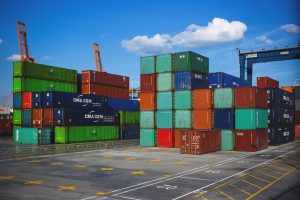R2 Blog
Popular Categories
Navigating the Road to Self-Driving Trucks in Logistics
Self-driving trucks are emerging as a pivotal innovation. These advanced vehicles offer a potential strategic solution poised to reshape supply chains across the globe.
Read MoreTraditional Methods to Modern Logistics: A Look at the History of Logistics and Supply Chain Management
Learn three proven techniques to improve supply chain visibility and enhance operational efficiency across your logistics network.
Read MoreWhat to Look For in Supply Chain Transparency Software
Learn three proven techniques to improve supply chain visibility and enhance operational efficiency across your logistics network.
Read MoreThree Techniques to Improve Supply Chain Visibility
Learn three proven techniques to improve supply chain visibility and enhance operational efficiency across your logistics network.
Read MoreGreen Logistics: Practical Ways to Implement Sustainability in Your Operations
Discover practical strategies for implementing green logistics to reduce environmental impact and promote sustainability across your supply chain.
Read MoreWhat Is a Milk Run in Logistics?
What is a milk run in logistics? Learn about this flexible freight-collection approach and whether it’s a good fit for your company’s shipping needs.
Read MoreFreight Handler: Choosing the Right Company
Check out our guide to understand how to identify and choose the freight handler that’s best equipped to meet your company’s logistics and shipping needs.
Read MoreTypes of Freight Shipping: How to Choose the Best
How do you choose the best shipping solution for your business? Learn everything you need to know about the different types of freight shipping in...
Read MoreLTL Benefits for Small Business Shipping
In this guide to less-than-truckload (LTL) benefits, learn about the many perks of LTL that can help you meet your small business shipping needs.
Read MoreAccessorial Charges 101: Everything You Need to Know
Accessorial charges can drive up your less-than-truckload (LTL) shipping costs. Here’s everything you need to know about accessorial charges.
Read MoreThe Difference Between Full Truckload & LTL Shipping
Which shipment type will provide the best bang for your buck: full truckload or less-than-truckload? Check out our list of five key differences to consider.
Read MoreContract vs. Spot Rates 101 — Everything You Need to Know
In this guide to contract vs. spot rates, you will learn everything you need to know about these agreements, including what they are, their benefits,...
Read MoreHow to Avoid 5 Cons of LTL Shipping
Despite the advantages of this versatile shipping method, there are cons of LTL shipping that you need to know about.
Read MoreHow to Quote LTL Freight: An Introductory Guide
In this guide to less-than-truckload shipping, you’ll learn how to quote LTL freight to obtain the best possible rates and maximize your company’s savings.
Read MoreHow to Ship LTL: Your 7-Step Guide
Less than truckload (LTL) shipping can be a cost-effective and efficient means of transporting your brand’s goods, especially if you are running a small to...
Read MoreDecoding Import Taxes and their Importance in Supply Chain
Import taxes play a pivotal role in the smooth functioning of supply chains, influencing costs, timelines, and compliance. Let's delve into the significance of import...
Read MoreMastering Delivery Amid Supply Chain Disruptions With R2 Logistics
Supply chain disruptions can wreak havoc on your delivery plans, but with the right strategies, you can navigate these challenges seamlessly. At R2 Logistics, we...
Read MoreWhat is 3PL?: The Best Guide to Third Party Logistics in 2024
In this guide, we explain everything you need to know about 3PLs. What is a 3PL? What they do, who needs them, and how to...
Read MoreHow AI Is Restructuring Supply Chain Networks
Are you using AI in supply chain management? If not, you could be missing out on several key benefits. Here's how AI is restructuring the...
Read MoreIs Cargo Insurance the Right Move for You?
Cargo insurance protects you from significant financial loss due to damage or theft. Learn how freight insurance works and what to look for in a...
Read MoreAsset-Based Versus Non-Asset-Based 3PLs: How They Compare
Looking for logistics support? Learn the differences between asset-based 3PL providers and non-asset-based 3PL providers to take charge of your supply chain.
Read More6 Best Practices for Preventing Cargo Theft in 2024
Cargo theft is costing U.S. companies billions of dollars each year. Protect your company from risk by implementing these six cargo theft protection strategies.
Read MoreWhat Is Landed Cost and Why It Is Important to Calculate
Are you involved in importing goods or simply curious about how global trade works? In either case, you’ve likely heard the term “landed cost.” But...
Read MoreReasons a Shipping Container Is the Hero of the Supply Chain Process
The shipping container is versatile, capable of being stacked on oceanic carriers, transported via train, or loaded on the back of semi trucks for last-mile...
Read MoreThe 7 Logistics Skills You Need for Landing Your Next Role
Do you have the logistics skills needed to stay competitive? If you’re considering a long-term career in supply chain management, here are the seven most...
Read MoreWhat Does “In Transit” Really Mean? Is Your Shipment Actually Moving?
Tracking updates give customers insight into their shipments. What does "in transit" mean? Learn about the delivery process and how 3PL providers can help.
Read MoreLead Time: The Secret to Retaining Customers
The question is, what is the hidden key to optimizing customer retention? It’s not a new marketing gimmick or a fancy loyalty program (although those...
Read MoreHow to Ensure a Cyber-Resilient Supply Chain
From manufacturing to delivery, every step of your supply chain can be a potential target for cyberattacks, jeopardizing your operations and reputation. Therefore, you must...
Read MoreWhat Is Integrated Logistics? An Introductory Guide
What is integrated logistics? It is the process of aligning resources and processes across departments to maximize efficiency.
Read MoreHow a 3PL Benefits Small and Midsize Businesses
Small business logistics doesn’t have to be a hassle. With a third-party logistics provider, you can create a nimble, efficient supply chain.
Read MoreHow to Make Sure Your Customs Clearance Process Is Efficient as It Can Be in 2022
If the customs clearance process is a major pain point for your business, these tips will help you become more efficient in 2022.
Read MoreTop 5 Advantages of Outsourcing Supply Chain Management to a 3PL
The Value of Outsourcing Supply Chain Management to a 3PL Before we dive into the benefits of outsourcing your supply chain management, let’s define what...
Read MoreLTL Freight Class vs. NMFC Codes: What Sets Them Apart
This article breaks down what ltl freight class along with NMFC codes entail so you can better conceptualize the significant impact they make in LTL...
Read MoreHow to Evaluate the Technology of a Potential 3PL Partner
3PL technology can streamline every aspect of the logistics process, from warehousing to delivery. These are the best 3PL technology solutions to look for.
Read MoreHow 3PL Benefits the Food and Beverage Industry
3PL for food and beverage providers can improve both the quality and safety of consumer products while improving the efficiency of the industry’s supply chain.
Read MoreThe Ultimate Guide to Freight Brokers: What They Do, Who Needs Them, and How to Find One
In our ultimate guide to freight brokers, we explain what these professionals do and how to find the perfect partner for your business.
Read MoreWhat Is a TMS? A Beginner’s Guide to Transportation Management Systems
A Transportation Management System (TMS) can dramatically improve your company’s logistics and put you ahead of the national competition.
Read MoreEverything You Need to Know About Expediting and the Logistics Process
In decades past, expediting was a process reserved for occasional priority shipments and high-value freight. While those deliveries still take place, expediting is no longer...
Read More6 Ways 3PLs Reduce Logistics Costs for Their Partners
There are many ways in which you can go about reducing your logistics costs, but one of the most practical involves partnering with a third-party...
Read More5 LTL Freight and Packaging Best Practices
By leveraging LTL freight and packaging best practices, you can protect your cargo, reduce damage claims, and elevate the customer experience you provide.
Read More5 Key Logistics Elements for Your Continuous Improvement Strategy
While many logistics conversations center on high-level topics like continuous improvement, it is impossible to leverage this methodology without a strong understanding of the core...
Read More“Made in America” vs. “Assembled in America”: What Is the Difference, and Why Does It Matter?
The “Made in America” label inspires confidence that you’re supporting American jobs and industries. Unfortunately, the definition of assembled in America isn’t nearly as clear....
Read MoreImportant Benefits of Expedited Shipping and Air Freight
Expedited shipping and air freight methods can streamline your supply chain to get products on shelves quickly. Find out how you can optimize this process...
Read MoreWhat Are LTL Bill of Lading Best Practices?
Anytime you prepare a less-than-truckload (LTL) shipment, you’ll also prepare a bill of lading (BOL). Here are some best practices for preparing an LTL bill...
Read MoreTop Industries that Benefit from 3PLs and Why
Any business can benefit from a third-party logistics (3PL) provider, especially in an age where supply chain management is of paramount importance. But some industries...
Read MoreHow LTL Shipping Helps Reduce Carbon Emissions in Logistics
LTL shipping is known for being cost-effective and convenient. While it certainly does provide those benefits, LTL shipping is also an excellent way of reducing...
Read MoreHow Online Options Have Spurred a Supply Chain Evolution
The rise of online shopping and support options is revolutionizing the supply chain and increasing the adoption of 3PL services. Read more about supply chain...
Read MoreWhat is LTL Freight? The 2023 Definition
What is LTL Freight Shipping? What is LTL is a question frequently asked. First, let’s break down the acronym. LTL stands for less than truckload...
Read MoreHow Is LTL Shipping Tracked?
Familiarizing yourself with the various LTL shipping tracking strategies can help you evaluate your supply chain visibility and determine whether the tactics you are using...
Read MoreHow 3PLs Help Create Better Customer Service Relations
If your organization has been exploring ways to elevate its quality of service, the 3PL method may be the answer. 86% of shippers feel that...
Read MoreThe Benefits of LTL for Shipping Fragile Freight
LTL shipping is a flexible ground transport solution that’s a great choice for vendors needing to ship fragile freight.
Read MoreBreaking Down the Services of a Well-Balanced 3PL Company
Third-party logistics providers offer a wide range of 3PL services to support your shipping needs. Read about the options here.
Read More7 Tips for Intermodal Transportation Success
When opting for intermodal transportation, shippers need to consider speed, efficiency, and delivery time. Read on for our best tips for achieving intermodal success.
Read MoreWhat is Truckload Shipping?
You own a soap business and want to transport your goods from a factory to a distribution center for a major retailer. How do you...
Read MoreReefer Trailers: The Backbone of Temperature-Controlled Shipping
Discover the key components of temperature-controlled shipping and the critical role reefer trailers play in ensuring products arrive at their destination fresh and intact.
Read MoreHow to Best Vet a Carrier During Freight Bidding Season
Over time, the freight bidding season has become an important part of the transportation industry, particularly in industries such as retail and manufacturing that rely...
Read MoreHow Transportation Labor Strikes Can Alter Your Supply Chain Flow
Get insights into how transportation labor strikes can disrupt your supply chain and impact your business operations.
Read MoreThe Benefits of Adopting Supply Chain Risk Management
Dive into the many benefits of adopting supply chain risk management and also learn the pitfalls of not adopting SCRM.
Read MoreThe Inner Workings of Air Freight Shipping
Air freight shipping is a type of transportation that involves the movement of goods by air, typically using planes. It is a fast and efficient...
Read MoreWhy a Sound Safety Stock Formula Minimizes Supply Chain Disruptions
Using a sound safety stock formula can help to avoid lost sales and customer dissatisfaction due to the unavailability of products, as well as to...
Read MoreBreaking Down the Cold Supply Chain
As we transition into the winter season, it’s only fitting we talk about the chillier part of the supply chain. Often referred to as the...
Read MoreHow to Get Ahead of the Holiday Shipping Madness
With every holiday season, consumers flock to their favorite stores or log into their go-to e-commerce sites and begin ordering millions of dollars in merchandise....
Read MorePurchase Order Management: 5 Reasons to Rethink Using Spreadsheets
Are you still using spreadsheets to manage your purchase orders? If so, then it is time to reconsider this approach. Here are 5 reasons why.
Read MoreThe Critical Role of Last Mile Logistics
Last mile logistics is all about what is involved in moving a product from one location to another. Learn how to simplify the process with...
Read MoreHow to Implement a Continuous Improvement Strategy for Your Supply Chain
A continuous improvement strategy can help your supply chain become more resilient, which will strengthen your competitive positioning in your sector. Learn about how to...
Read MoreThe Ins and Outs of the Seasonality of Freight
Carriers, shippers, and businesses must adapt to seasonal freight trends in order to succeed in the modern logistics landscape.
Read MoreConsolidated vs. Hub and Spoke LTL
When it comes to shipping LTL there are two methods to consider — consolidated and hub and spoke. Here we break down the two so...
Read MoreProcurement and Supply Chain Management: Understanding the Impact and How to Optimize Performance
Procurement and supply chain management are two closely intertwined topics, and businesses must treat them as such.
Read More5 Critical Supply Chain KPIs and Metrics You Should Be Tracking
In this guide, we identify five supply chain KPIs that every business should be tracking in order to optimize business efficiency.
Read MoreWill Tesla’s Electric Semi-Truck Make a Significant Impact on the Logistics Industry in 2023?
When Elon Musk announced the Tesla semi-truck in 2017, the logistics world was in awe. Simply named “Semi,” this all-electric semi-truck appeared to be a...
Read MoreWhat is Ocean Freight Shipping?
Ocean freight shipping is the process of transporting large quantities of goods across the sea.
Read MoreAdvice for How to Effectively Handle Concealed Damage Claims in the Logistics Industry
Join us as we reveal our tips for handling concealed damage claims and navigating this sometimes tedious process.
Read MoreHow to Succeed During Peak Shipping Season in 2022
Peak shipping season can present significant challenges for your supply chain, but a 3PL can optimize your shipping process and help you thrive.
Read MoreEnergy Efficiency in Logistics: Optimizing Truck Loading
Every detail matters when achieving better energy efficiency in logistics. Optimizing truck loading operations plays a vital role in managing your bottom line.
Read MoreZero Trust Security: Strengthening Supply Chains
Can zero trust security help the supply chain become stronger? Learn more in this quick guide to zero trust security.
Read MoreUnderstanding the Reasons Carriers Implement a Shipping Embargo
If you rely on shipping and logistics services, then you have likely encountered the term “shipping embargo.” However, you may not be quite sure what...
Read MoreHow Collaboration and Technology Creates Efficiency for SMB’s
Vice President of Supply Chain Solutions at R2 Logistics, Frank Dreischarf, recently joined Sarah Barnes-Humphrey on her Podcast, Let’s Talk Supply Chain.
Read MoreThe Rise, Fall, and Future of the Railroad Boxcar
Boxcars are a mainstay of the shipping industry. But why are they in decline, and what does the future hold? Learn more in this guide!
Read MoreTop Trends Impacting the Global Supply Chain in 2022
Curious as to the impact of global supply chain trends 2022? This blog details the top trends in supply chain management to look out for...
Read MoreHow to Minimize Supply Chain Disruptions
Is supply chain disruption causing you to lose money and customers? Here are some strategies to help keep your company resilient during this challenging time.
Read MoreFebruary 2022 Market Updates
Stay in the loop with R2's February 2022 Market Updates including the shutdown of the US-Canada border.
Read MoreThe Supply Chain Talent Shortage Impact
The supply chain talent shortage is getting hard to bridge, and this new year is no exception in the logistics industry.
Read MoreWhat is a Logistics Carrier?
You order a camera lens from China and it arrives at your home in New York, in less than a month. How does this happen?...
Read MoreWhat is Spot Freight?
Looking for an alternative to contract freight shipping? Learn how spot freight can offer you another option—and potentially save you money.
Read MoreTop 5 Benefits of Using a Transportation Management System
Companies looking to optimize their supply chain management strategy should look no further than implementing a Transportation Management System. A Transportation Management System, or TMS,...
Read MoreHow to Drive More Productive LTL RFP Negotiations
Looking for a solution to LTL shipping RFP negotiation hassles? Learn how our TMS provides instant access to accurate data for your decision-making processes.
Read More5 Key Considerations for a Wide Load and Oversized Load
What makes an oversized load? Understand these factors before transporting goods.
Read MoreWhat is RMA?: Best Practices for Establishing Your RMA Process
What is RMA? Return merchandise authorization (RMA) streamlines returns for customers and warehouse operations.
Read MoreWhat is Reverse Logistics? Why Is It on the Rise?
Reverse logistics is how a product moves from a customer back to the seller. Learn how you can optimize this process by partnering with the...
Read MoreWhat Are LTL Accessorial Charges and How Can You Avoid These Extra Costs?
Accessorial charges apply to any shipment that doesn’t travel from dock to dock. Costs can be minimized by knowing as much as possible about your...
Read More4 Best Practices to Improve Your Flatbed Shipping Performance
This post will explore the difficulties of transporting non-enclosed cargo and three ways that businesses can improve their flatbed shipping performance.
Read MoreTruckload Strategies for Improved Efficiency and Cost Control
Efficient shippers take an agile approach to simplify and better implement their truckload strategies and keep costs in control. This blog post explains how.
Read MoreWhat is Outsourced Logistics? The Guide to Using 3PLs
What is Outsourced Logistics? Everything you need to know about using 3PLs When you place an online order on Target, it takes about 2-3 days...
Read MoreReasons Outsourcing Transportation Management Will Improve Your Logistics Operation
Reasons Outsourcing Transportation Management Will Improve Your Logistics Operations Outside of a pandemic or natural disasters, you rarely see an empty shelf at a grocery...
Read More

